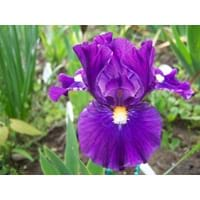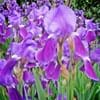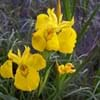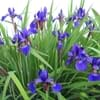Life Span
Perennial
Perennial
Type
Herbaceous Perennial
Perennial
Origin
Hybrid origin
Northeastern United States, Mid-Atlantic United States, Southeastern United States, North-Central United States, Central United States, South-Central United States
Types
Not Available
Apricot Delight, Copper canyon
Number of Varieties
Not Available
Habitat
Boggy areas, Dry areas, meadows, Rocky Mountains, Semi desert, Well Drained
Roadsides, sand dunes, Waste areas
USDA Hardiness Zone
3-9
5-8
Sunset Zone
1a, 1b, 2a, 2b, 3a, 3b, 4, 5, 6, 7, 8, 9, 10, 11, 12, 13, 14, 15, 16, 17, 18, 19, 20, 21, 22, 23, 24
1a, 1b, 2a, 2b, 3a, 3b, 4, 5, 6, 7, 8, 9, 10, 11, 12, 13, 14, 15, 16, 17, 18, 19, 20, 21, 22, 23, 24
Habit
Clump-Forming
Clump-Forming
Flower Color
Rose, Burgundy
Yellow
Flower Color Modifier
Bicolor
Bicolor
Fruit Color
Not Available
Tan
Leaf Color in Spring
Green
Green
Leaf Color in Summer
Green
Green
Leaf Color in Fall
Green
Green
Leaf Color in Winter
Light Green
Light Green
Leaf Shape
Sickle-Shaped
Oblong
Plant Season
Spring
Summer
Sunlight
Full Sun, Partial Sun
Full Sun, Partial Sun
Growth Rate
Medium
Medium
Type of Soil
Clay, Loam, Sand
Loam, Sand
The pH of Soil
Acidic, Neutral, Alkaline
Acidic, Neutral, Alkaline
Soil Drainage
Well drained
Well drained
Bloom Time
Not Available
Early Summer, Summer, Late Summer
Tolerances
Drought
Variety of soil types
Where to Plant?
Ground, Pot
Container, Ground, Pot
How to Plant?
Root Plants
Divison, Seedlings, Stem Planting
Plant Maintenance
Medium
Low
Watering Requirements
Average Water Needs
Average Water Needs, Do Not over Water, Never Over-water, Requires regular watering, Water more in summer
In Summer
Lots of watering
Lots of watering
In Spring
Moderate
Moderate
In Winter
Average Water
Average Water
Soil pH
Acidic, Neutral, Alkaline
Acidic, Neutral, Alkaline
Soil Type
Clay, Loam, Sand
Loam, Sand
Soil Drainage Capacity
Well drained
Well drained
Sun Exposure
Full Sun, Partial Sun
Full Sun, Partial Sun
Pruning
Remove damaged leaves, Remove dead branches, Remove dead leaves
Remove damaged leaves, Remove dead branches, Remove dead leaves, Remove dead or diseased plant parts
Fertilizers
All-Purpose Liquid Fertilizer
All-Purpose Liquid Fertilizer, fertilize in growing season
Pests and Diseases
Bacteria, fungus, Viruses
Slugs, Snails
Plant Tolerance
Drought
Variety of soil types
Flower Petal Number
Single
Single
Foliage Texture
Medium
Fine
Foliage Sheen
Matte
Matte
Attracts
Butterflies, Flying insects, Hummingbirds
Insects
Allergy
Skin irritation
Abdominal pain, Constipation, Diarrhea, Skin irritation
Aesthetic Uses
Beautification, Showy Purposes
Beautification, Borders, Landscape Designing, Showy Purposes
Beauty Benefits
Not Available
Good for skin, Making cosmetics, Stops hair loss
Environmental Uses
Air purification
Air purification, Food for insects, Versatility
Medicinal Uses
Sedative
Eczema
Part of Plant Used
Flowers, Root
Root
Other Uses
Basketary, Used for fragrance
Decoration Purposes, Medicinal oil, Showy Purposes, Used as Ornamental plant, Used for its medicinal properties
Used As Indoor Plant
No
Yes
Used As Outdoor Plant
Yes
Yes
Garden Design
Cutflower, Mixed Border, Rock Garden, Wall
Edging, Feature Plant, Groundcover, Mixed Border
Botanical Name
IRIS 'Candy Apple'
OENOTHERA 'Cold Crick'
Common Name
Dwarf Bearded Iris
Suncups, sundrops
In Hindi
Dwarf Bearded Iris
Evening Primrose
In German
Dwarf Bearded Iris
Evening Primrose
In French
Dwarf Bearded Iris
onagre
In Spanish
Dwarf Bearded Iris
onagra
In Greek
Dwarf Bearded Iris
Νυχτολούλουδο
In Portuguese
Dwarf Bearded Iris
Evening Primrose
In Polish
Dwarf Bearded Iris
wiesiołka
In Latin
Dwarf Bearded Iris
vespere Primrose
Phylum
Magnoliophyta
Magnoliophyta
Class
Magnoliopsida
Magnoliopsida
Order
Asparagales
Myrtales
Family
Iridaceae
Onagraceae
Clade
Angiosperms, Monocots
Angiosperms, Eudicots, Rosids
Subfamily
Iridoideae
Onagroideae
Season and Care of Dwarf Bearded Iris and Evening Primrose
Season and care of Dwarf Bearded Iris and Evening Primrose is important to know. While considering everything about Dwarf Bearded Iris and Evening Primrose Care, growing season is an essential factor. Dwarf Bearded Iris season is Spring and Evening Primrose season is Spring. The type of soil for Dwarf Bearded Iris is Clay, Loam, Sand and for Evening Primrose is Loam, Sand while the PH of soil for Dwarf Bearded Iris is Acidic, Neutral, Alkaline and for Evening Primrose is Acidic, Neutral, Alkaline.
Dwarf Bearded Iris and Evening Primrose Physical Information
Dwarf Bearded Iris and Evening Primrose physical information is very important for comparison. Dwarf Bearded Iris height is 25.40 cm and width 30.50 cm whereas Evening Primrose height is 1.00 cm and width 0.10 cm. The color specification of Dwarf Bearded Iris and Evening Primrose are as follows:
Dwarf Bearded Iris flower color: Rose and Burgundy
Dwarf Bearded Iris leaf color: Green
Evening Primrose flower color: Yellow
- Evening Primrose leaf color: Green
Care of Dwarf Bearded Iris and Evening Primrose
Care of Dwarf Bearded Iris and Evening Primrose include pruning, fertilizers, watering etc. Dwarf Bearded Iris pruning is done Remove damaged leaves, Remove dead branches and Remove dead leaves and Evening Primrose pruning is done Remove damaged leaves, Remove dead branches, Remove dead leaves and Remove dead or diseased plant parts. In summer Dwarf Bearded Iris needs Lots of watering and in winter, it needs Average Water. Whereas, in summer Evening Primrose needs Lots of watering and in winter, it needs Average Water.





